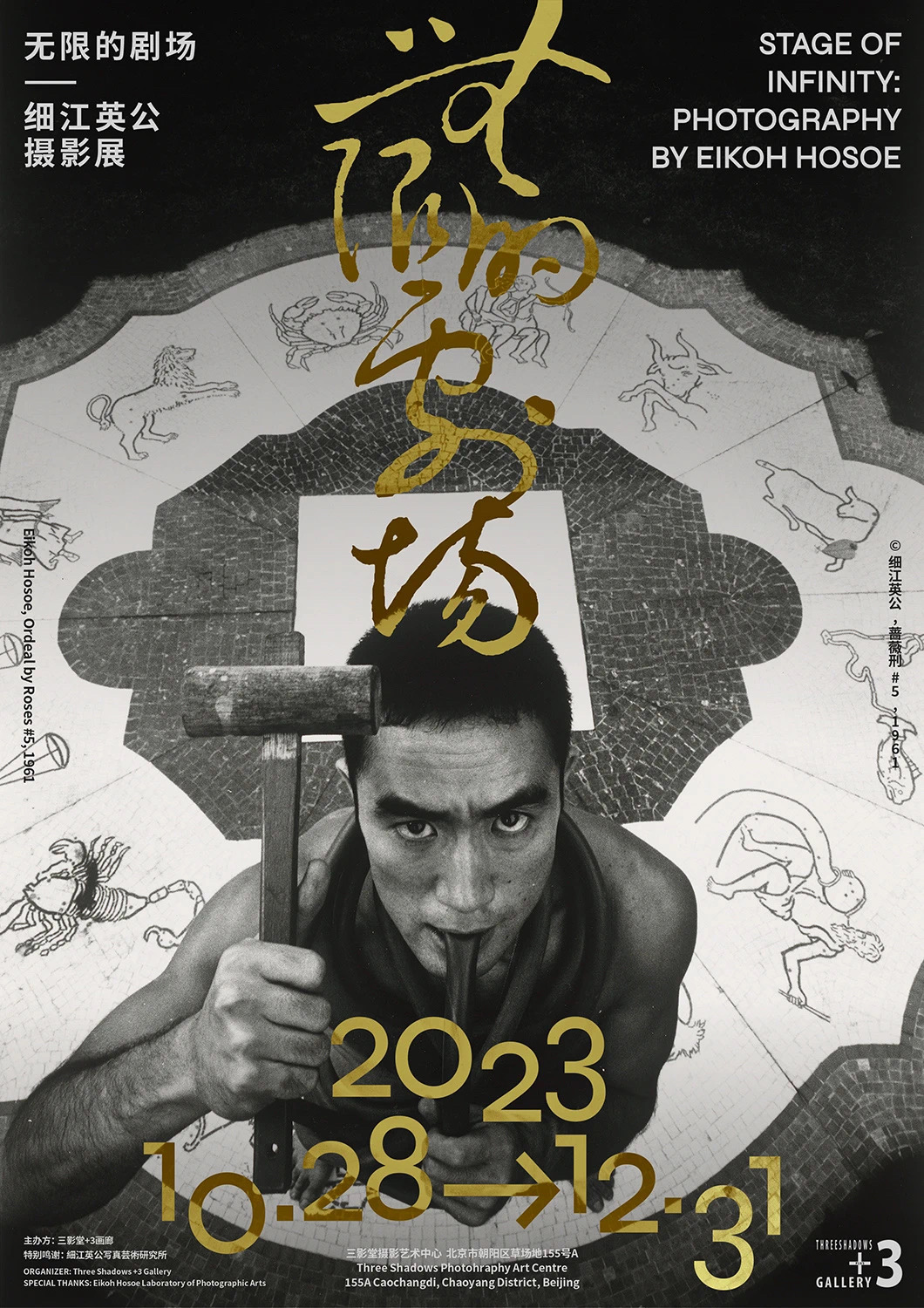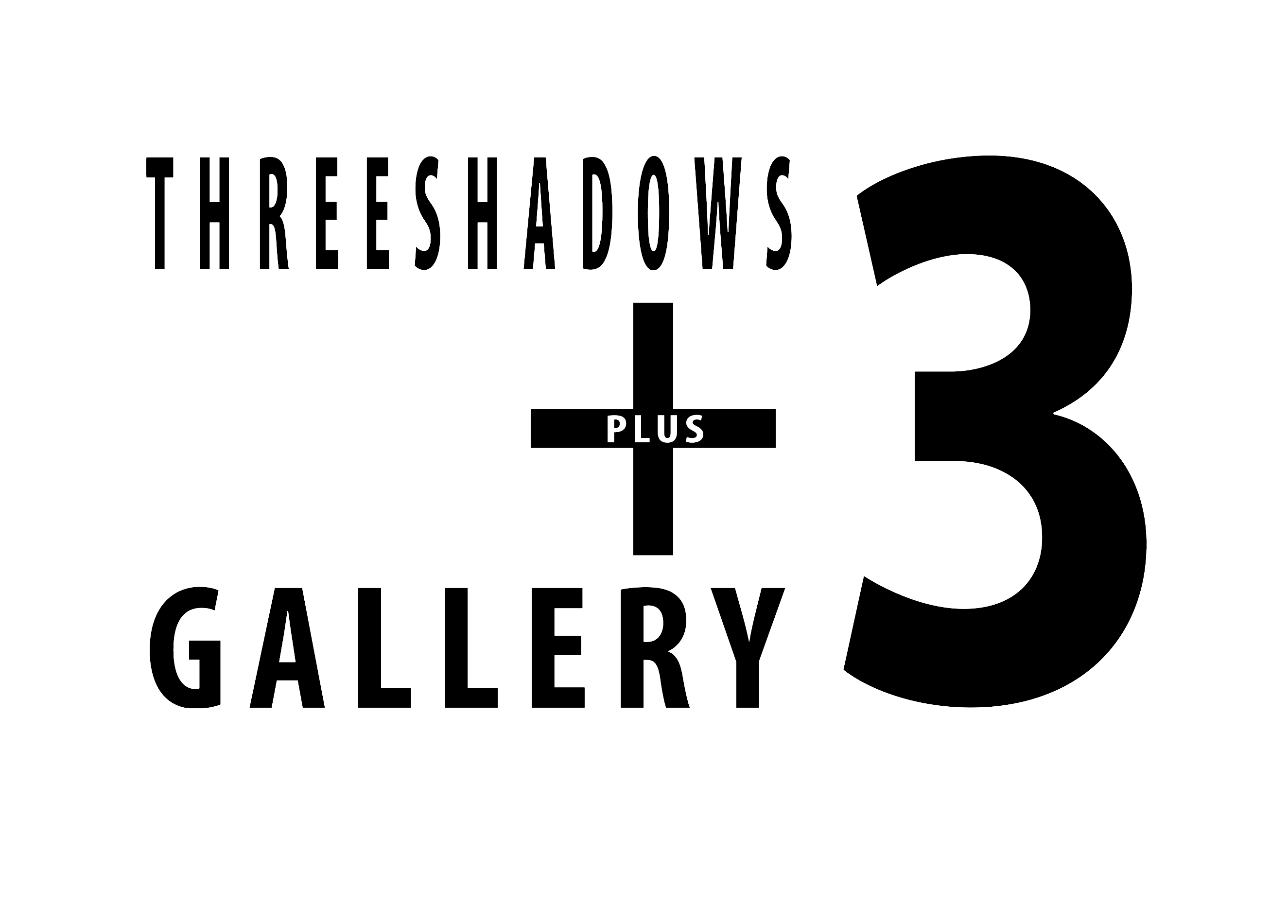2023|STAGE OF INFINITY: PHOTOGRAPHY BY EIKOH HOSOE

STAGE OF INFINITY: PHOTOGRAPHY BY EIKOH HOSOE
Venue: Gallery 2, Three Shadows Photography Art Centre
Organizer: Three Shadows +3 Gallery
Acknowledgements: Eikoh Hosoe Photography Art Institute
STAGE OF INFINITY: PHOTOGRAPHY BY EIKOH HOSOE
In June 1959, a groundbreaking performance was taking place at a theater in Marunouchi of Tokyo. Obscure lighting and the melodies of a blues harmonica filled the space. Amidst a young man’s hurried footsteps and breaths, another older man entered, tapping the ground with his heels as he walked onto the stage. He cradled a chicken in his arms, handing it over to the young man who then held it between his thighs. After a struggle and cries, the chicken was ultimately killed. This was a Butoh performance inspired by Yukio Mishima’s novel ‘Forbidden Colours,’ and it marked the debut of Tatsumi Hijikata and Yoshito Ohno. Sitting in the audience, the 26-year-old Eikoh Hosoe was profoundly shaken by this astonishing performance. He rushed backstage to meet the performers, and this encounter marked the defining point of his artistic career for the next four decades: the pursuit of an independent aesthetic through the expression of human body.
The 1950s and 1960s were the most pivotal decades in post-war Japan. During this time, a wave of avant-garde figures emerged, leaving a lasting impact around the world. Notable figures included the novelist and playwright Yukio Mishima, the Butoh dancers Tatsumi Hijikata and Kazuo Ohno, the experimental artist Yayoi Kusama, and the photographer Eikoh Hosoe. With these figures at its core, numerous dynamic circles emerged, contributing actively to Japan’s art scene at the time. In an era when mainstream photography predominantly favored social realism, Eikoh Hosoe embarked on a journey to explore the expression of inner consciousness. He viewed photography as a subjective and personal form of creative expression and engaged in extensive and intimate collaborations with other avant-garde counterparts. In the shooting process, the exceptionally talented artists resonated with each other, with their inspiration and thoughts interweaving and colliding, ultimately coalescing into a powerful expressive force that was captured by Hosoe when he pressed the shutter.
‘I only photograph people I am acquainted with and genuinely interested in. During the sessions, I immerse them in an environment I am familiar with and capture them according to my own vision. This is my “Hosoe Theater,” where I am the producer, director, audience, and even the critic, while the subjects stage a magnificent performance exclusively for me.’ — Eikoh Hosoe
‘Hosoe Theater’ is a specific dimension constructed by his camera lens. Within this dimension, a performance is enacted between the photographer and the photographic subject. It may not have a clear beginning or end; its narrative is woven together in real-time by the avant-garde individuals serving as photographic subjects, with their spontaneous expressions and actions, and by Eikoh Hosoe himself through his aesthetic choices in terms of photographic perspective, composition, and the interplay of light and shadow.
The black-and-white photographs, rich in dramatic tension and narrative qualities, explore profound themes of the body, emotions, gender, and life and death. They sometimes evoke feelings of repression, distortion, radicalism, and surrealism. Indeed, the ‘Hosoe Theater’ is the reverse of the world we inhabit. In our real society, we have reverence for social propriety and emphasis on morality and hygiene, but beneath this facade lie the hidden layers of ugliness, filth, and the unspeakable. In stark contrast, whether it is the chilling face clutched under the arm in ‘Man and Woman,’ Mishima’s unwavering gaze behind the rose in ‘Ordeal by Roses,’ Hijikata’s menacing gestures in ‘Kamaitachi,’ or Ohno’s soulful portrayal through his withered body in ‘The Butterfly Dream,’ the ‘Hosoe Theater’ fearlessly put the dark, absurd, and cruel aspects of humanity onto the stage. However, within this unique dimension, it precisely illuminates the brilliance of pure and genuine human nature, where clear and sincere emotions flow from the depths of the soul.
